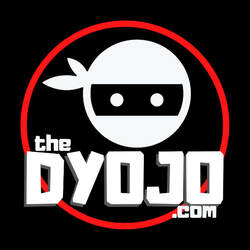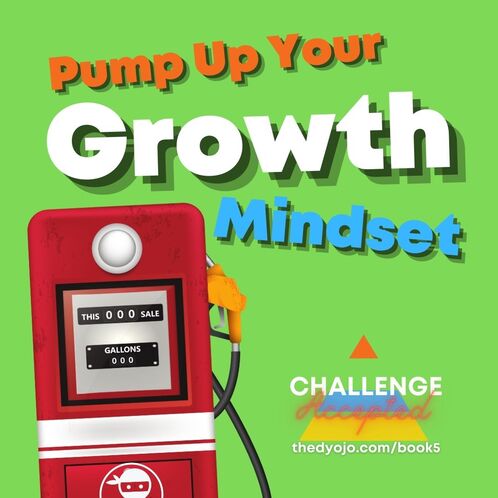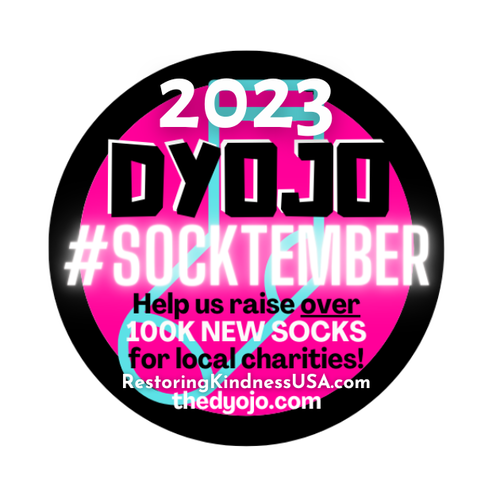|
People care about the heart of a company. Readers can check out the SOCKTember 2023 article in C&R Magazine to get some of the infographics and other visuals but wanted to shout out. In addition to what we wrote there. Michelle Blevins reminds contractors that SOCKtember and Restoring Kindness encourage organizations to, "Do these random acts of kindness throughout communities this is one of the best ways that you can market without marketing, right like you're building such great brand recognition and showing that your company really really cares." SOCKTember 2023 Teams
Record Breaking DonationsSOCKTember 2023 was a record breaking year. This year restorers set a record raising over 72,000 pairs of new socks for local charities. And that's teams that raised 30 pairs of socks all the way obviously to the winner that raised 10,794 pairs. We had quite a few raisins 651 in the 4001 in 3000, a couple in the twos very high twos as well. Several and that 17 1615 1100 A couple of five hundreds and then several teams less. Just remember Red Deer raise 36 pairs in the first year and then they've gone up from every year since so it every pair your team raises a pair that wasn't in the community going to people who need socks previously. Thank You to Pierce CountyFor our team, The Best DANG Sock Raising Team in Pierce County we want to thank those contributors who made themselves known. Many people gave generously and anonymously. Our generous drop sites - Jimmy, Dawn, and the team at Edward Jones of Graham Washington, Judy and the team at Tacoma Trophy, Quincy and the team at Campfire Coffee, and Theory Real Estate. There were several companies and individual contributors as well, including Movement Mortgage, Arken, ARES, Washington Restorer, Expert Restoration, Tyler Hegstad, Jotasha Krueger, Terrance Krueger, Dave English, Jennifer English, Hendricks Family, Nan Gehlen, Encircle, Luke Draeger, Aramsco, Joyce Gabriel, and MANY MORE.
0 Comments
On October 16, 2023, the White House announced new actions on home ownership including $16 billion for housing and rehabilitation Last Week We discussed a contractor who is facing civil lawsuits for spending construction funds on a lavish lifestyle, including a bright yellow $85k Dodge TRX, Super Bowl and World Series trips, and a million-dollar home. Then he goes missing for nearly a week. Some listeners commented that it was an interesting story but didn’t see the correlation to “shortening the DANG learning curve”. I think one of the lessons here is one that is similar to the RJC case we also recapped in Episode 108, that contractors, and business persons in general, like to point to all the outside burdens that impact their businesses. Whether this comes from insurance companies that delay, deny, and defend claims; homeowners who want everything for free and don’t want to pay the final bill when the job is done, the government messing with the economy, etc. All those outside forces are always going to be a factor, but too often as contractors we don’t deal with the one factor we have the most control over, ourselves. TDP 108 Crime & Construction - Contractor Burns Truck to Cover Fraud? - https://www.youtube.com/watch?v=QpQWVND5iWo&t=658s From the RJC vs. AISD story (Episode 92, Part 1), there are dozens of things the contractor could and should have done to better protect themselves. Its a shame when a contractor goes down, and we don’t know the full story, but we can learn from failures to communicate, to provide documentation, and have a solid contractural understanding of the scope and payout process. TDP 92 Contractor bankrupted by storm response, RJC vs AISD part 1 - https://www.youtube.com/watch?v=yjsJYljF9_0&t=124s For this contractor in Houston, there’s likely more to the story, but if the lawsuits are to be believed, it’s a common story among contractors who live well when the money is flowing but don’t properly prepare for the ups and downs of every industry. Both of these contractor horror stories have one thing in common, a big payout without the proper regard for the risk. In RJC’s case, what happens if the customer disputes the bill or delays payment? In Detamore’s case, if you have a big payout for 14 houses, don’t spend the “profits” before you’ve actually produced the job and ensured the profits are there. The simplest lesson from RJC is to develop a process that is consistent every time, from how you onboard your customer, confirm the contract and fee schedules, and how you document the work. The simplest lesson from Detamore is similar to what we tell our employees, in the peak seasons make sure you set aside money not spend it frivolously. After that first period of overtime, prevailing wage, or storm work, what does the new skilled trades employee do? They buy a huge truck. What happens when things get slow or there isn’t any OT, they are hurting. The same goes for the business. Construction Stories President Biden proposed $16 billion for the Neighborhood Homes Tax Credit, which would result in more than 400,000 homes built or rehabilitated, creating a pathway for more families to buy a home and start building wealth. NEWS - $16B from the White House for houses and rehabilitation - https://www.whitehouse.gov/briefing-room/statements-releases/2023/10/16/white-house-announces-new-actions-on-homeownership/ The President has also proposed a $10 billion down payment assistance program that would ensure first-time homebuyers whose parents do not own a home can access homeownership alongside a $100 million down payment assistance pilot to expand homeownership opportunities for first-generation and/or low-wealth first-time homebuyers. Make home repairs easier to finance: HUD, through FHA, is continuing its work to update the 203(k) Rehabilitation Mortgage Insurance Program to help homebuyers and homeowners finance the purchase or refinance of homes in need of improvement. The 203(k) Rehab Mortgage Insurance from HUD - https://www.hud.gov/program_offices/housing/sfh/203k/203k--df Thoughts on the White House press release from Real Estate Mindset including comments on the 203(k) - https://www.youtube.com/watch?v=zrwYhVsRm54&t=884s FHA is considering potential policy changes that could increase the funds available to borrowers to make renovations and repairs. Other policies under review would permit more time for the completion of those improvements. These and other program changes will increase the use of FHA-insured mortgages to finance renovations that will improve existing homes and restore them to viable use, adding to the supply of housing in communities across the country. The market is in flux right now, especially the housing market. For contractors looking to diversify their portfolio, it may be time to freshen up on what it looks like to work with the federal, state, and local government agencies that are looking to spend this “Build Back America” money. This story shows that at least some of those proceeds, if not additional funding, is going into the residential market for housing assistance, hopefully, more people will be able to get into affordable housing, as well as housing rehabilitation, allowing homeowners to access low-interest loans for safety, accessibility, and necessary renovations to their existing homes. While it’s not as simple as applying for the loan and then the work can immediately start, the process also isn’t as cumbersome as some might think. Charleston area real estate broker Bill Olson shared some of these requirements on his YouTube page. Biden’s homeownership actions could affect Charleston - https://www.youtube.com/watch?v=x8zILT2WfXM Requirements include: Could borrow up to $35,000 dollars, must use an approved contractor, the work has to start within 30 days of closing on the 203(k) loan, and the work has to be completed within six months. In our area, the requirements aren’t beyond the reach of most contractors so it would be in the best interests of contractors listening to check out what is available in their city, county, and state. For our local business, we have been doing some research and wrote a blog post covering some of the details for the City of Tacoma and Pierce County, Washington Blog post on the Pierce County Home Rehabilitation program - https://www.aresrestoration.com/post/pierce-county-home-rehabilitation Closing Thoughts President Biden proposed $16 billion for the Neighborhood Homes Tax Credit, which would result in more than 400,000 homes built or rehabilitated, creating a pathway for more families to buy a home and start building wealth. According to the website neighborhoodhomesinvestmentact.org the group estimates that each $1 billion in Neighborhood Homes investment would result in the following impacts nationwide:
The government claims it is investing in making housing affordable, but there are other actions that several construction groups argue are making building affordable housing more difficult. We had previously reported on the emergence of natural gas bans on Episode 97. TDP 97 Book #5, Gas Stoves, and 80s Prisons - https://www.youtube.com/watch?v=yf75eMi1ifg&t=229s It appears that the gas ban in New York has made it through their state legislature whereas the one in Berkley, California is at a stalemate for now - https://gizmodo.com/new-york-gas-stove-ban-lawsuit-1850931008 The gas ban passed this May when New York Governor Kathy Hochul signed the All Electric Buildings Act. This made New York the first state to ban gas hook-ups in new buildings. The law aims to decrease the use of fossil fuels in the state and is supposed to take effect for new buildings smaller than seven stories high by 2026. This means those properties will not be allowed to use gas-powered appliances like water heaters, furnaces, and stoves. The policy will apply to larger buildings starting in 2029. It does not apply to existing buildings. Next Week
Episode 108 of the DYOJO Podcast was about a contractor who potentially mishandled hundreds of thousands if not millions of dollars. Episode 110, coming soon, will address an issue in Washington State where a construction project was off the mark by billions of dollars. TDP Credits The DYOJO Podcast is produced by The DYOJO (D-Y-O-J-O). Host Jon Isaacson, the Intentional Restorer, is an author and contractor based in Puyallup Washington. You can find out more about this podcast, including blog posts with content references, as well as Jon’s books for contractors and other services at thedyojo.com. If you have enjoyed this content, please like, subscribe, and share. For the 4th Annual DYOJO Podcast SOCKTember NEW sock-raising competition in support of local charities, we've joined forces with C&R Magazine
Restoring Kindness and many teams throughout Canada and the United States are working together with the goal of raising over 100,000 pairs of new socks in the month of September. Find out more about this charitable event and how you can help from our SOCKTEMBER PAGE. SOCKTember 2023 will be kicking off soon. Join The DYOJO and Restoring Kindess for a Zoom call to discuss how you and your team can be involved with this community event.
Stay tuned via the Restoring Kindness website for more information. Please reach out to Jon Isaacson (The DYOJO) or Sarah Guastaferro (Restoring Kindness) for questions and information. What is SOCKTember? It’s simple really. Most local community services NEED socks. It is one of the highest demand items for people in need of all ages. SOCKTember was started with the idea of picking up an extra pack of new socks whenever team members go to the store. If teams of contractors, customers, and community members did this we could raise a lot of new socks for local agencies.
READ MORE about this great event in the C&R Magazine article LEARN MORE and get your team inspired by hearing about our haul of NEW SOCKS donated to LOCAL community organizations and the WINNER of SOCKTember 2022 (below) At a local meeting for restoration and insurance claims contractors in Washington, someone brought up a new "health hack" shared by actress Gwyneth Paltrow. Contractors may be encouraged to add on a revenue stream for their business with their existing equipment, i.e. ozone machines and wall drying systems. The actress says, "It's pretty weird," but, "It's been very helpful." The procedure she was discussing was ozone insufflation or rectal ozone therapy. Listen to Episode 100 of The DYOJO Podcast to hear more about this concept. How do you make great content that connects with people, especially in the trades? How do you start out with content creation for your business? Join Podcast Host and Author, Jon Isaacson, as he discusses these points and more on this episode of Specified Growth Podcast! Host Tats Nakagawa (CEO/Co-Founder at Castagra Products, Inc.) talks to experts from inside and outside the industry. In this episode of Specified Growth Podcast, Tat's is joined by Jon Isaacson, a Restoration Operations Expert, Author, and Podcast Host. Jon talks about his background in the property restoration industry and how he got into content creation and podcasting. He discusses how to properly qualify opportunities and say no to the right things. Listeners will hear Tats and Jon discuss how they are leaning to create content that connects with people, and much more. |
Words
The DYOJO - helping contractors shorten Archives
June 2024
Categories
All
EstimatingMarketingInsurance ClaimsLeadership |
|
| |||||||




 RSS Feed
RSS Feed
